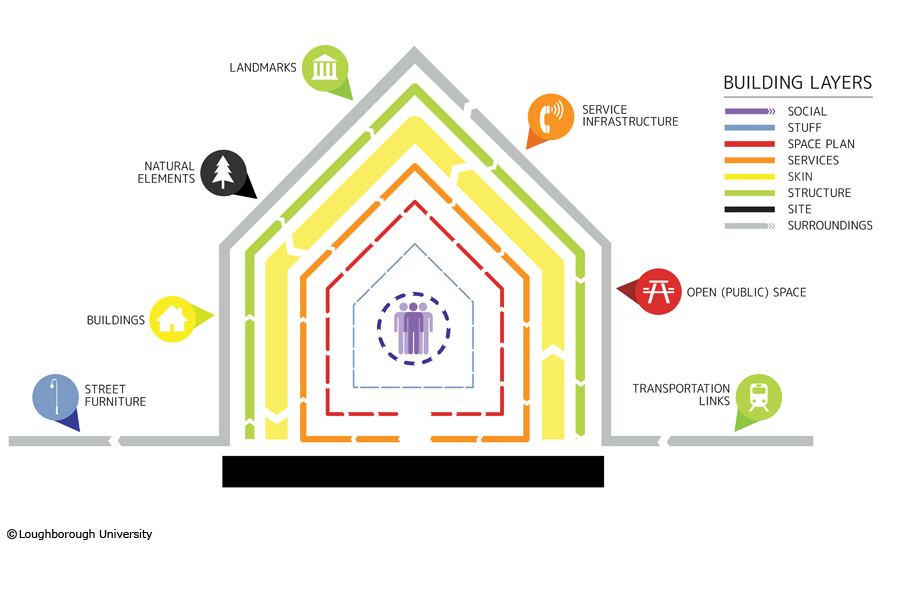Brand’s (1997) chapter “Shearing Layers” presents ideas
which I have considered before, but have never really researched. The idea of a building as layers of longevity
of built components is extremely interesting.
It forces the architect to think to the future- what becomes of the
building once the current interior or use is no longer relevant? To build for longevity, it seems, one must
consider beyond a single use, and build for flexibility. The structure of a building must transcend
its initial intended use and allow for changing of tenants, functions, tastes
and purpose. It must be dynamic and adaptive to enable it to serve its future
users. In this way, the architect perhaps,
at a minimum, needs to explore future uses of their designs, or at the very
least, design that which is flexible enough for relevance in the future.
The above image outlines the various layers of a building which Brand describes in his article, as well as a few others. Personally, I feel that this is an interesting but useful way of understanding a building from the point of view of time.
Brand, S., 1997. Shearing Layers, in How buildings learn : what happens after they’re built, London: Phoenix Illustrated. pp12-23

No comments:
Post a Comment